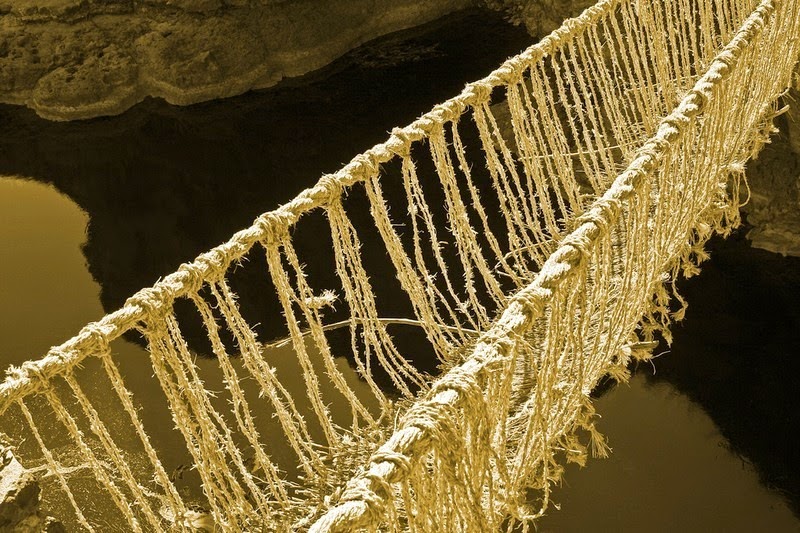These bridges had short lives and needed to be replaced every few years.
The bridge is 148 feet long and hangs over the river more than a hundred foot below.
The floor or walkway is of small sticks and canes, fastened transversely with raw-hide strings.
In ancient times, Indians coming from Andahuaylas and other districts had to pay tolls to use the bridge.
So they usually brought cabuya leaves, where it grows, to pay toll with.
These were prepared and made into ropes by the custodians of the bridge.
The responsibility of the bridges maintenance might also have been thrust upon the participants as a form of tax.







